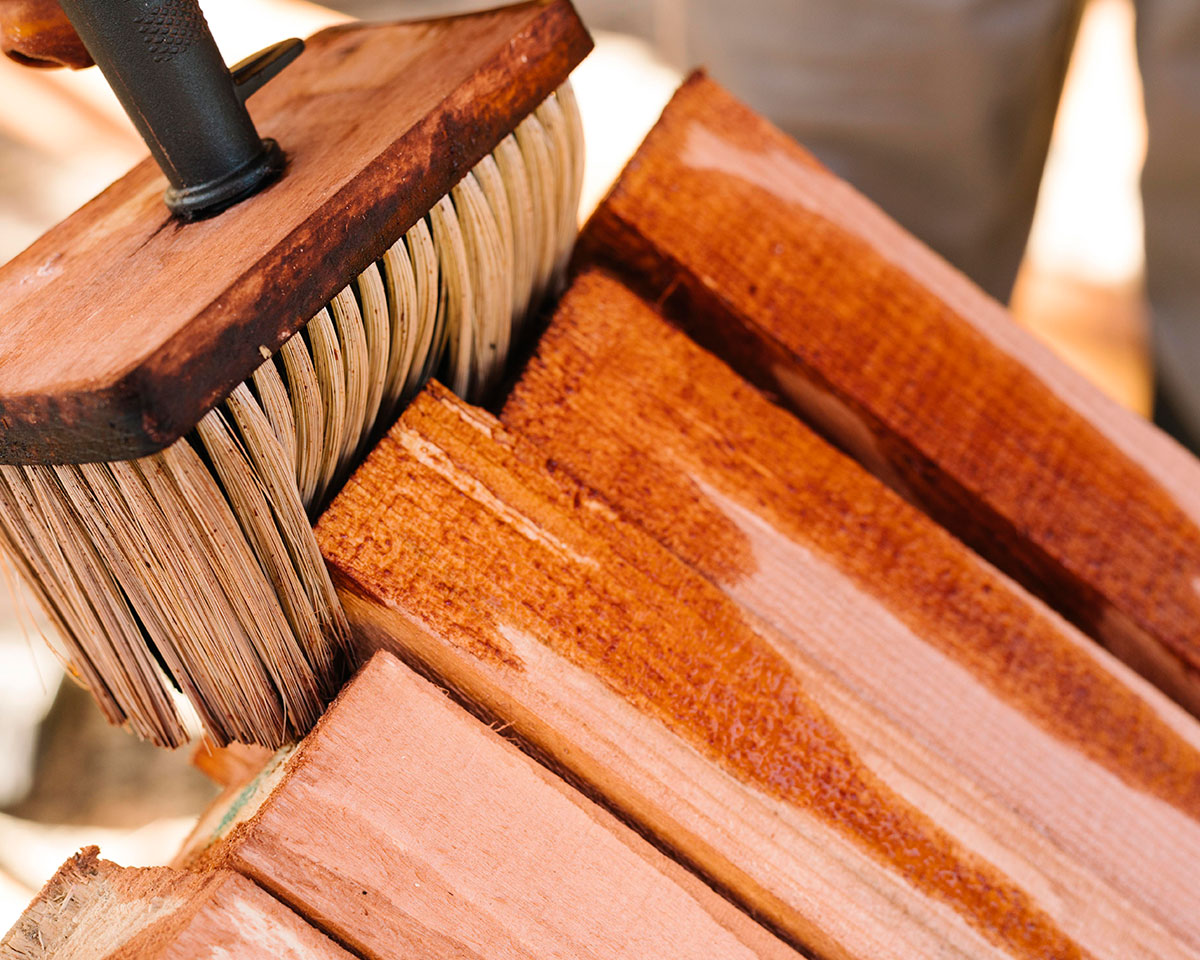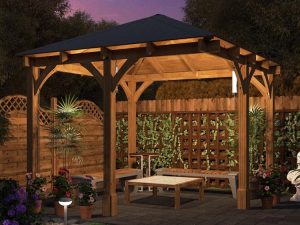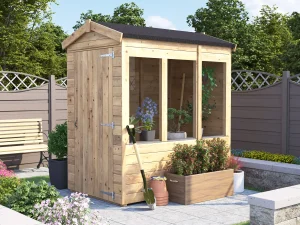I’ll be honest. Before working at Dunster House, I didn’t have a clue about pressure treatment, dip treatment or treatment of any kind. Of course, I had heard of the importance of treating your shed but not enough to make an informed decision. This initial naivety puts me in a prime position to explain the differences using as little technical ‘jargon’ as I can.
What is Pressure Treatment?
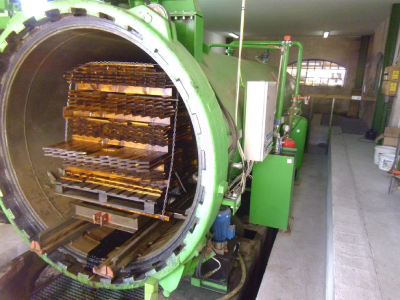
The process of pressure treatment is quite simple. We take the timber, after it has been cut to size, and place it on a pallet. The wood is then placed into a large cylindrical tank which is underground. It is sealed before the air is removed via vacuum. By removing the moisture within the timber, we are left with more space deep within the timber. After the air has been removed, the tank is flooded with our preservative (Tanalith ‘E’ Tanatone). Once the tank is full, the air is removed again which forces the preservative deep into the grain of the wood. Normally, the timber will come out a faint green colour but we have a brown additive added to make it a rich brown colour. By pre-cutting the timber, we ensure that you are provided with fully treated pieces of timber rather than exposed ends.
What is Dip Treated Wood?
Dip treatment, sometimes called dipping, is different. As with the pressure treatment process, there is a tank underground. However, instead of the timber being sealed within a deep chamber, the timber is simply immersed in a bath of treatment for a period of time. These timbers are then left to dry. In ‘The Preservative Treatment of Farm Timbers’, George McMonies Hunt explains that dip treatment “allows all checks and defects to become filled (…), but the penetration and absorption are usually slight”[1]
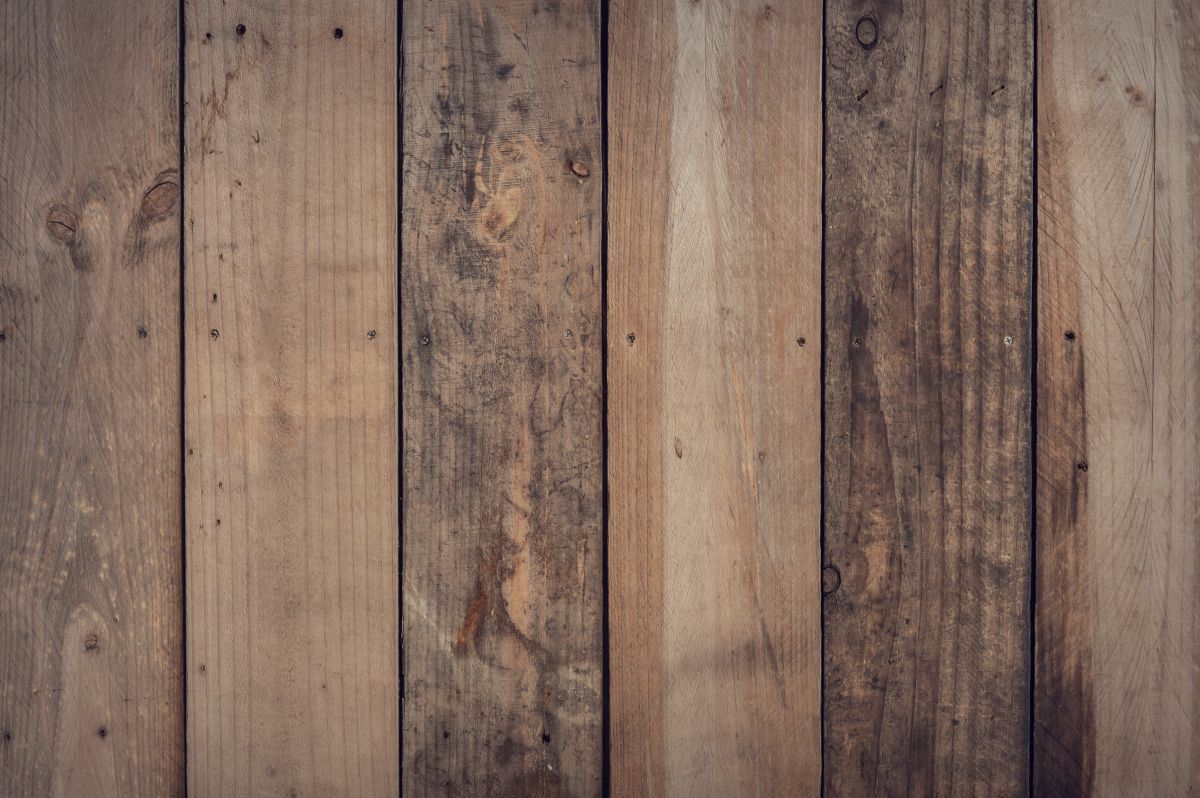
Levels of Protection
The way in which I interpret dip treatment is that it is a fake tan for timber. It does make your product look good by adding colour to the timber. However, this may thin or fade over time. This is just a temporary solution and does not truly protect your building. You may be reading this shaking your head in disagreement, having owned a dip treated log cabin, and thinking it has worked perfectly well. However, if you have followed the rules by reapplying treatment annually then that is your protection.
Pressure treatment commonly arrives in your kiln or air dried. The treatment is so deeply enthused into the grain of the timber that reapplication is rarely needed. Pressure treated products have, by far, more protection against rot and fungal decay. Dunster house offers pressure treated garden shed, garden offices and garden structures.
Cost
Dip treated timber is initially cheaper to purchase than pressure treated timber. This is due to the dip treating process taking less time and therefore incurring lower labour and storage costs. However, with dip treatment, you will need to retreat your garden building annually. Some companies even state that you need to treat this when before construction as well. A decent timber treatment can cost £20-£50. If you have to purchase treatment yearly, the costs soon add up.
Pressure treatment is forced deep within the timber and then dried naturally using either air (if it is hot outside) or, like us, a kiln drier. The timber is then protected for a number of years, in our case 10 years guaranteed, against rot and fungal decay. The process requires a lot of time, effort and storage meaning that the initial cost of your product may be higher but will save you both time and money.
Convenience
By far, pressure treated timber is more convenient than dip treated or untreated timber. If you order dip treated timber, you don’t need to conduct any additional treatment before constructing or for a length of time afterwards. If you purchase dip treated timber you often have to reapply for treatment before construction and then annually. This may not seem like a lot, but the reapplication of treatment will mean deconstructing and reconstructing your log cabin each year to ensure the floor bearers are fully protected. We conducted an experiment with one of our Climbing Frames to see how long it would take to retreat it and found it can take up to three days. That is three days per year that you would lose to treatment. Luckily, our climbing frames come fully pressure treated.
As you can see from the comparisons above, pressure treated timber is the best option for your garden building. Think of it like buying your first car. Sure, you could purchase a second hand car off of Gumtree for a relatively small price (dip treated shed) rather than from a second hand car dealership (pressure treated shed). You will save money initially but the costs of the MOT (retreatment) will soon cost you.
Please note: You should always be careful when looking at any guarantees offered on untreated timber and read the fine print as you will often find they are pointless.
[1] Hunt, G. Mcmonies (1928) The Preservative Treatment of Farm Timbers, p24


